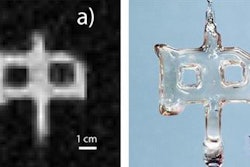Researchers at the University of Pennsylvania School of Medicine in Philadelphia are working with two new techniques for lung imaging with MRI: the use of hyperpolarized helium (3He) for ventilation imaging in humans, and injected polarized carbon-13 (C-13) labeled molecules in animal models.
The 3He technique allows radiologists to observe the lung as gas flows in and out, providing high-resolution images of human ventilation, according to the institution. The 3He protocol requires patients to inhale the gas after it's been exposed to a laser to create the polarized helium. Researchers are then able to measure the rate of diffusion of the helium molecules, which reflect the size of the air sacs in the lung.
Researchers at Penn are also using MR in animal models, which they are injecting with polarized carbon-13-labeled molecules and watching its conversion in cells in real-time. The facility said it can take images of the C-13 as it moves through metabolic steps inside lung cells. They hope to use this information to determine if a cell is abnormal or normal to pinpoint the location of disease.
By AuntMinnie.com staff writers
March 7, 2007
Related Reading
Penn to order 7-tesla MRI, August 30, 2006
Penn wins $1 million grant, December 21, 2005
Copyright © 2007 AuntMinnie.com



.fFmgij6Hin.png?auto=compress%2Cformat&fit=crop&h=100&q=70&w=100)




.fFmgij6Hin.png?auto=compress%2Cformat&fit=crop&h=167&q=70&w=250)











